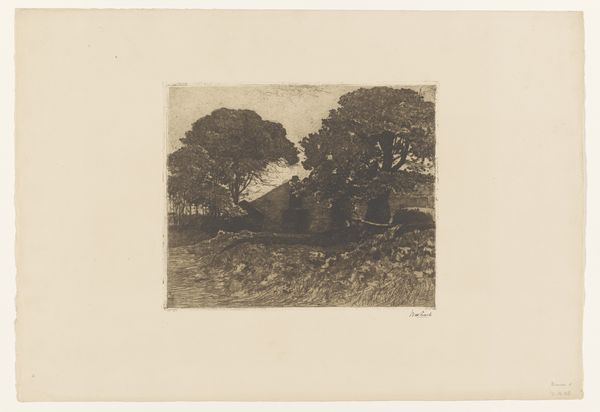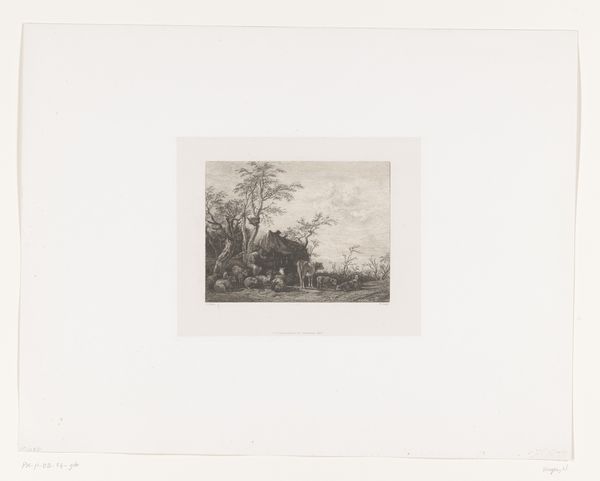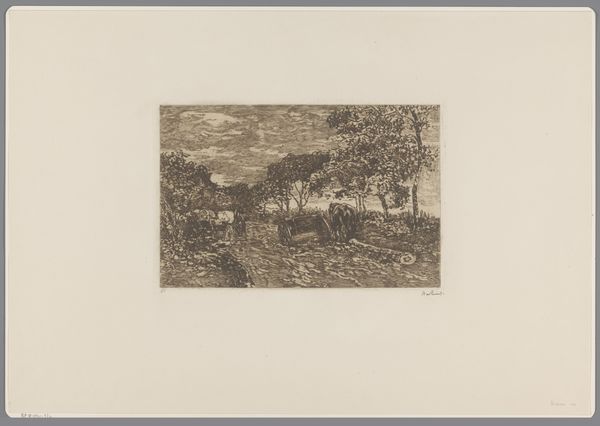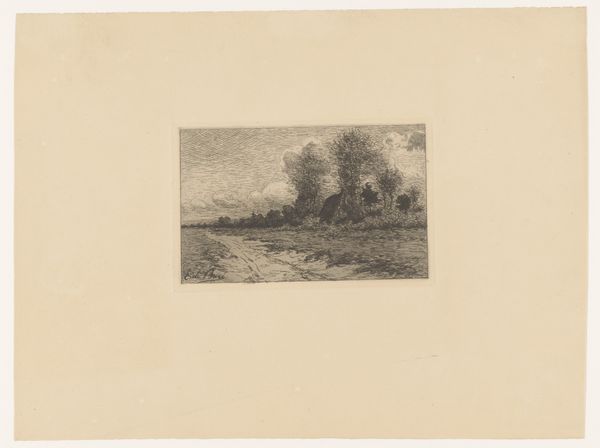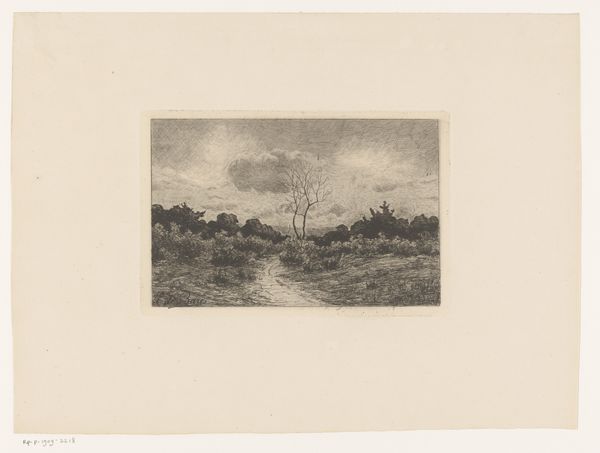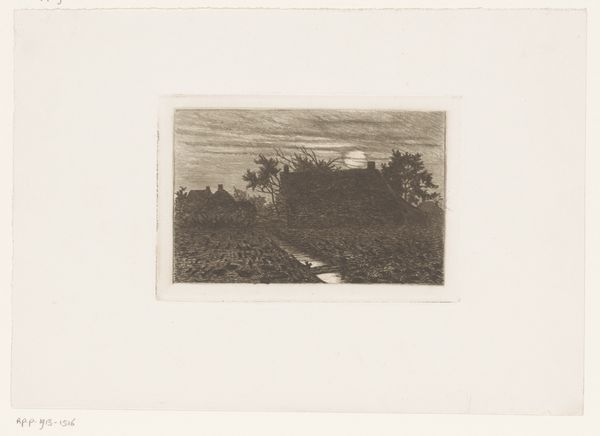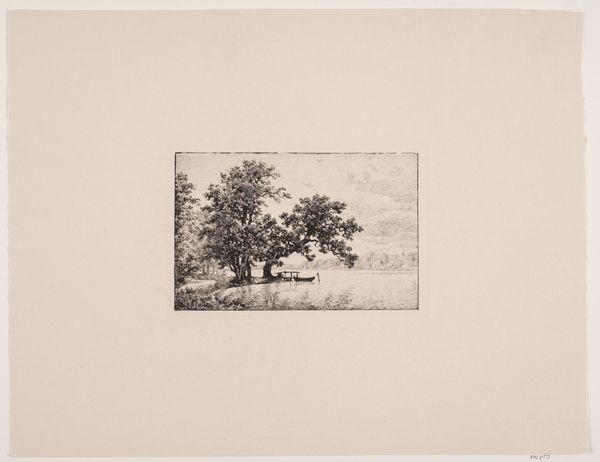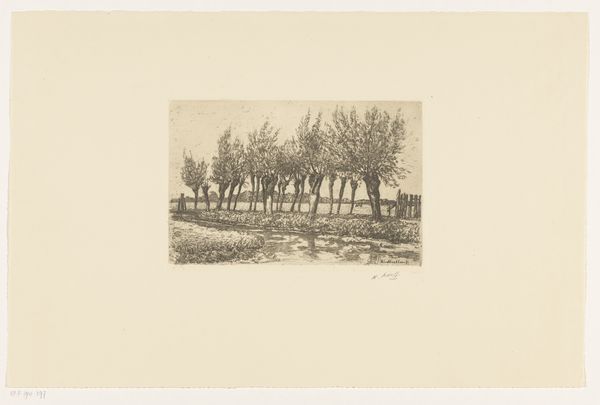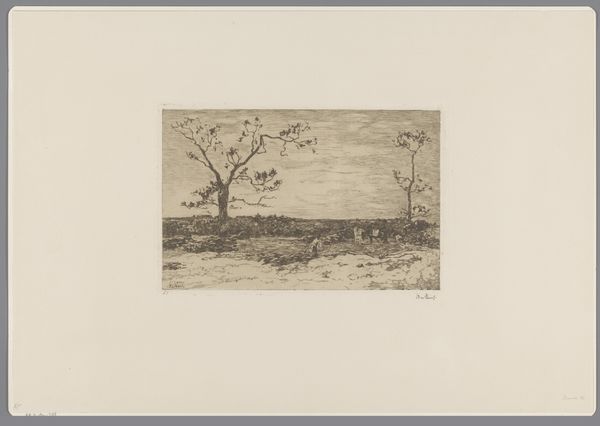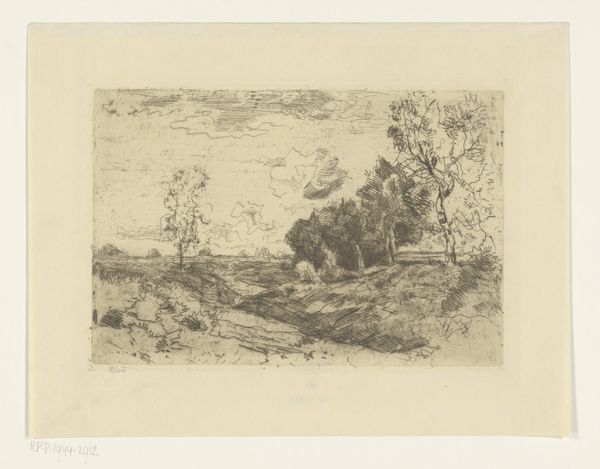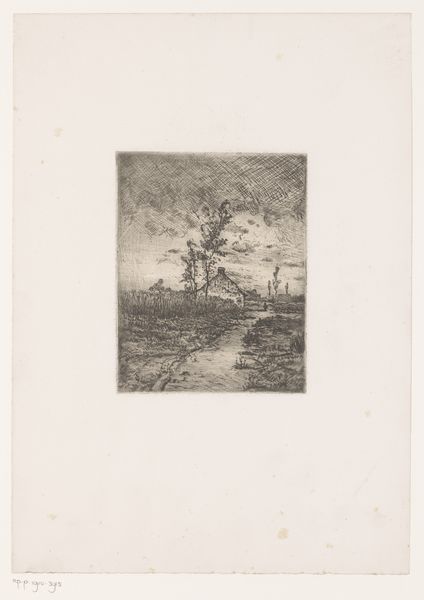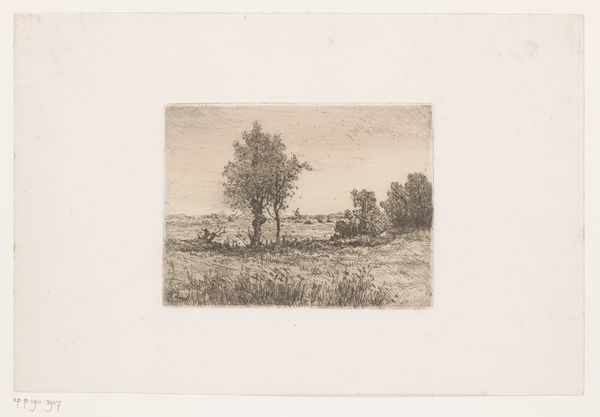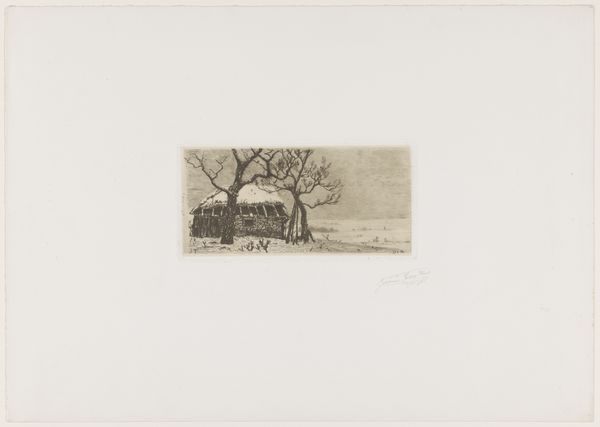
Dimensions: height 140 mm, width 199 mm
Copyright: Rijks Museum: Open Domain
Curator: This is "Weide met koeien," or "Pasture with Cows," an etching and graphite work on paper, created around 1896 by Willem de Zwart. Editor: There’s a stillness to it. A hazy, monochrome landscape. You can almost smell the earth. Curator: De Zwart, although influenced by Impressionism, really focused on the Dutch landscape tradition, so consider the socio-economic changes of the Netherlands at this time. As urbanization increased, these rural scenes took on a different symbolic weight, didn't they? Editor: Absolutely, it's interesting to consider this through a material lens. Printmaking at the time was undergoing innovation, but remained tethered to this very manual labor. Etching as a craft involves tangible, physical processes of production which mirrors the labor intensive pastoral life displayed. Curator: Right. And look at how the cows are rendered. Not idealized, but very much part of the working landscape, not merely picturesque. It's quite a radical departure, moving from idyllic pastoral paintings. De Zwart is addressing agricultural life from a more honest perspective, particularly the working animal's position. Editor: And the scale is important too, it invites you into that small intimacy. Its humble materiality also makes it widely reproducible, fitting for a vision of a pastoral scene that can then reach wider audiences within changing urban landscapes. Curator: I agree. There's also something quite melancholic about it to me. It speaks to a sense of loss. It portrays a specific moment in Dutch social history where a changing landscape reshapes a nation's idea of labor. Editor: I like how considering both production and subject meet here. I see labor captured both in the means and subject matter. Curator: Yes, reflecting on this artwork, the social and material aspects are clearly inextricable from any art historical reading of it. Editor: Agreed. The connection between material conditions and lived experiences adds significant depth.
Comments
No comments
Be the first to comment and join the conversation on the ultimate creative platform.
